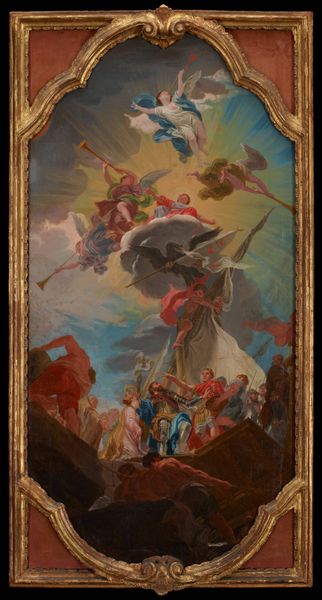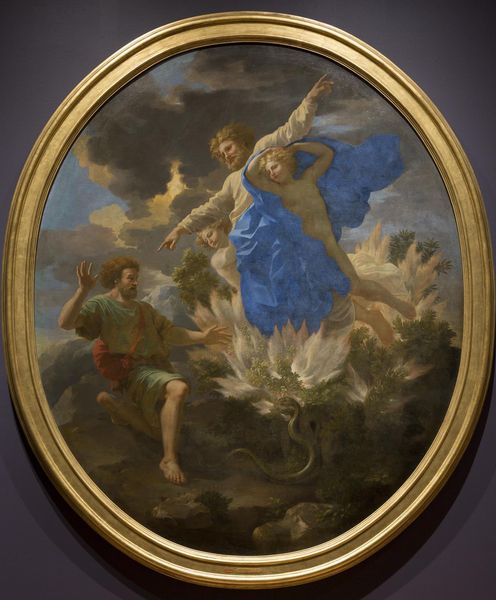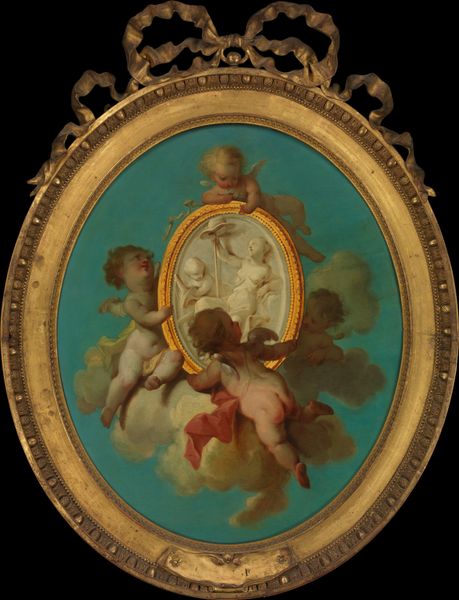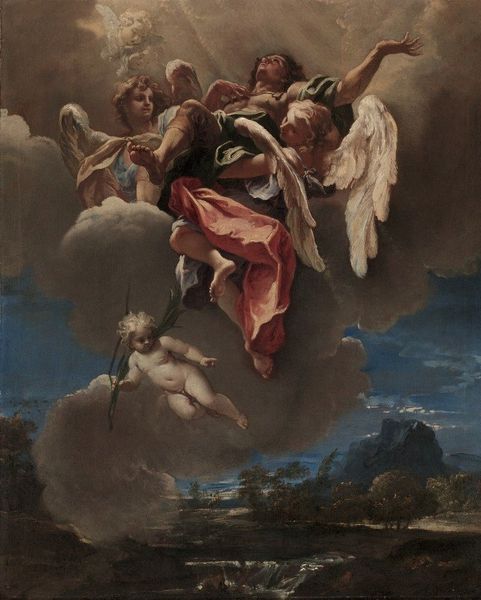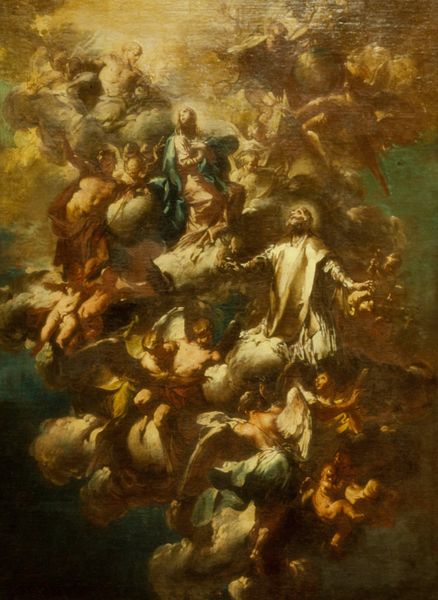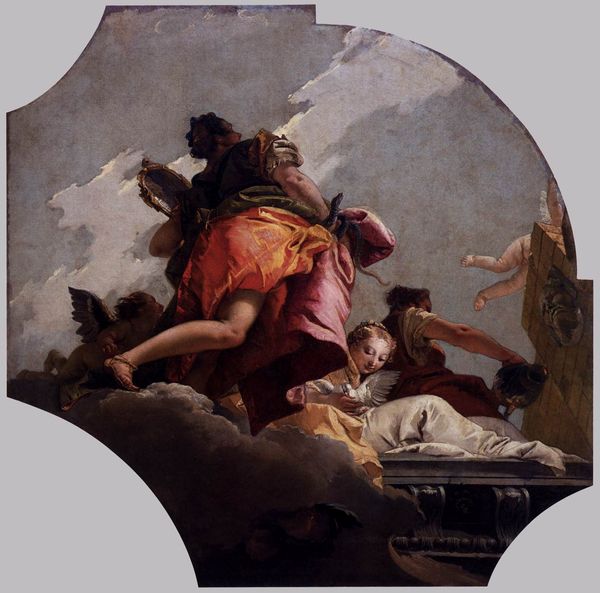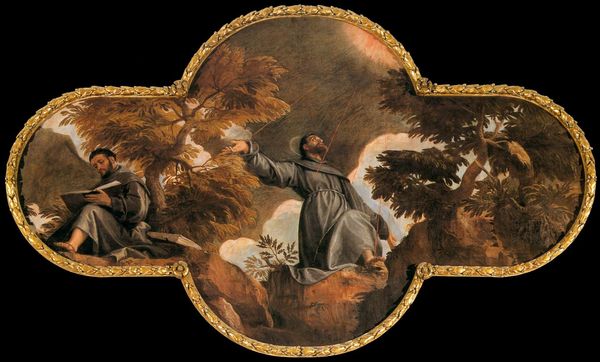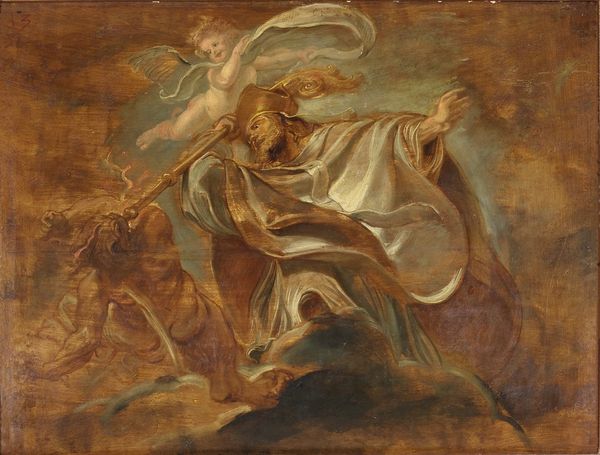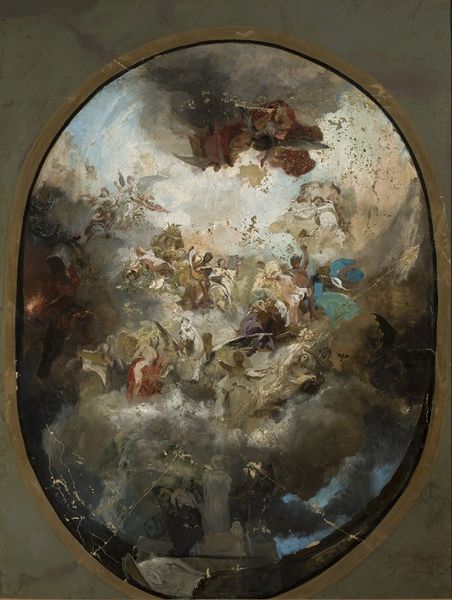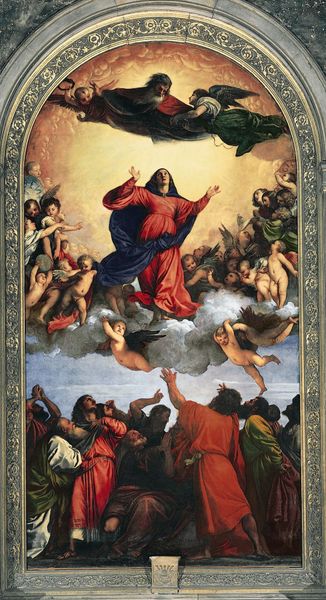
painting, oil-paint
#
portrait
#
allegory
#
baroque
#
painting
#
oil-paint
#
figuration
#
oil painting
#
history-painting
Copyright: Public domain
Editor: So this is Gaulli's *Madonna in Glory Crushing the Snake*, an oil painting. The dark background and radiant figure really create a sense of drama and triumph. What strikes you most about this piece? Curator: I'm immediately drawn to the iconography. Consider the historical context: imagery like this wasn’t just about religious devotion, it was deeply intertwined with power. The Virgin Mary, bathed in divine light, literally crushing a serpent – that's a potent visual message, particularly resonant in the Baroque era, when the Church sought to reassert its authority through art. Editor: It does feel very intentional, the way it’s staged. Curator: Exactly. It begs the question: who was the intended audience? Was it primarily for a religious order, a noble family, or for wider public display? That informs how we interpret its meaning and impact. Think about the message this sends about women. Editor: It presents an interesting paradox. Submissive yet powerful. Curator: Precisely. The depiction of the Virgin as both ascendant and dominant speaks volumes about the complex role women occupied within society and the religious imagination during the period. Do you agree that this is an empowering depiction? Editor: That's such a great point. I'll never be able to look at this the same way again. Curator: These discussions encourage us to see art not as isolated objects, but as products and reflections of the society from which they came. I think that examining how visual cues influenced both faith and secular power makes this artwork unforgettable.
Comments
No comments
Be the first to comment and join the conversation on the ultimate creative platform.
